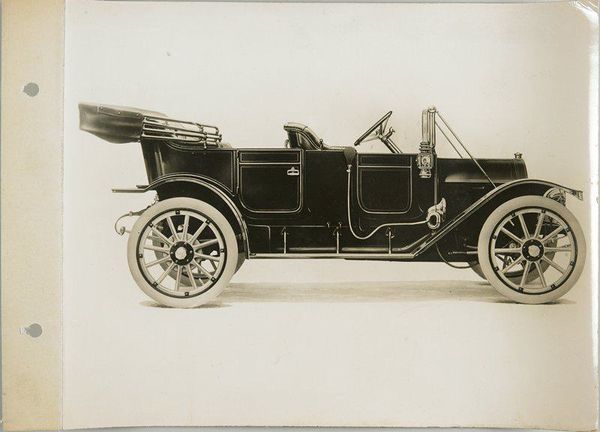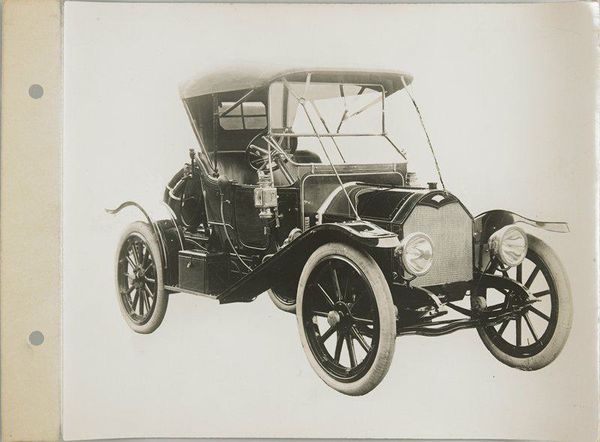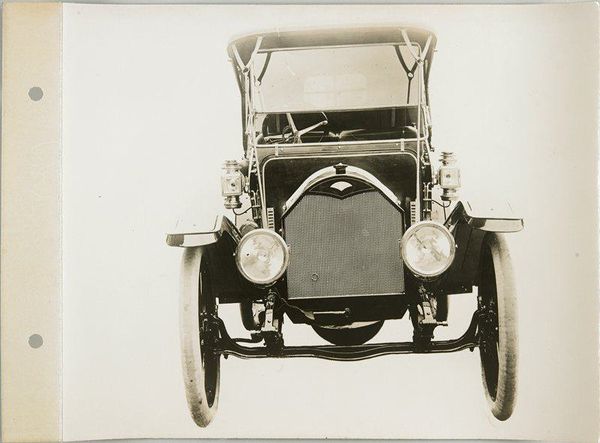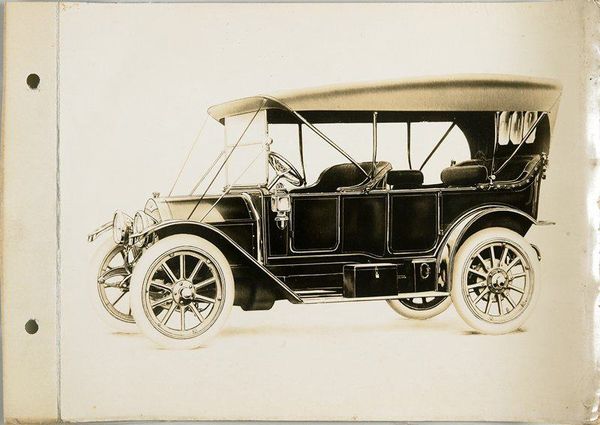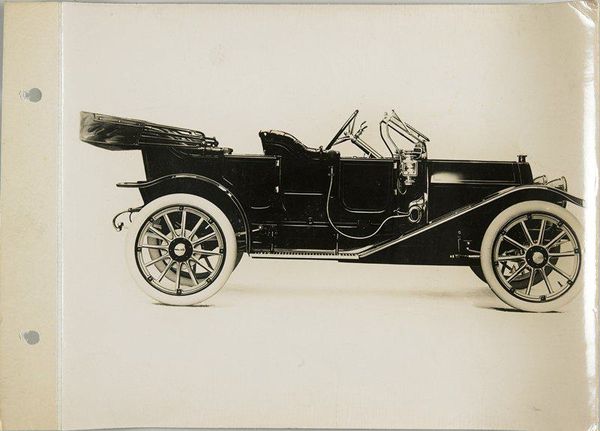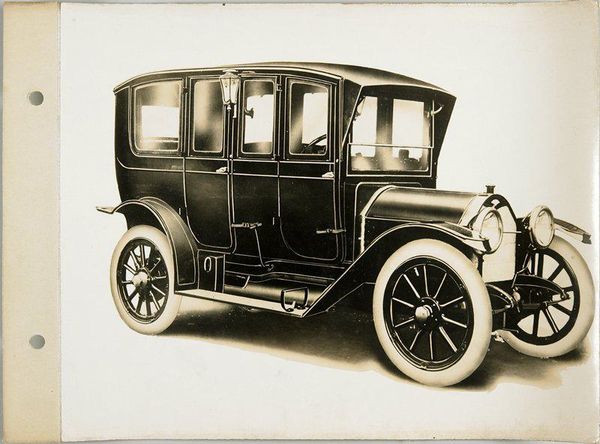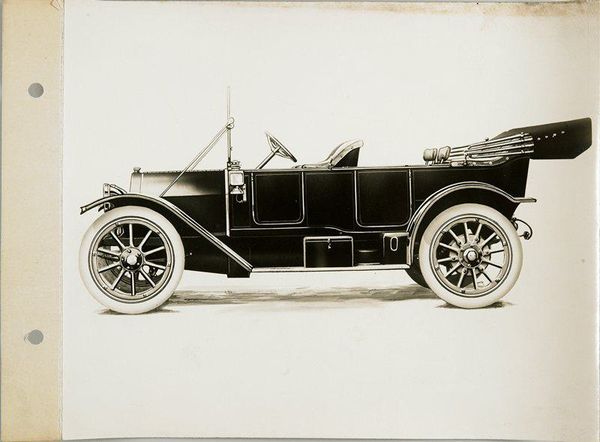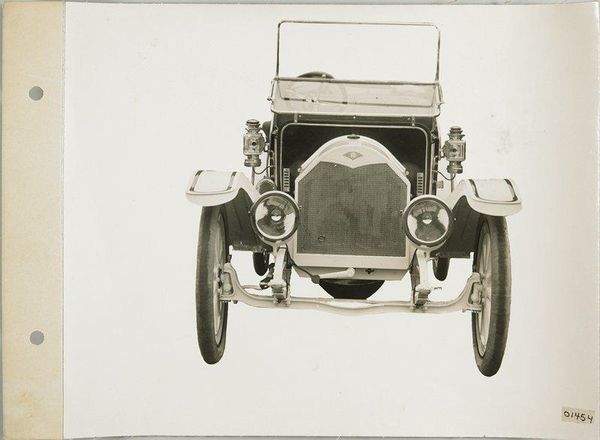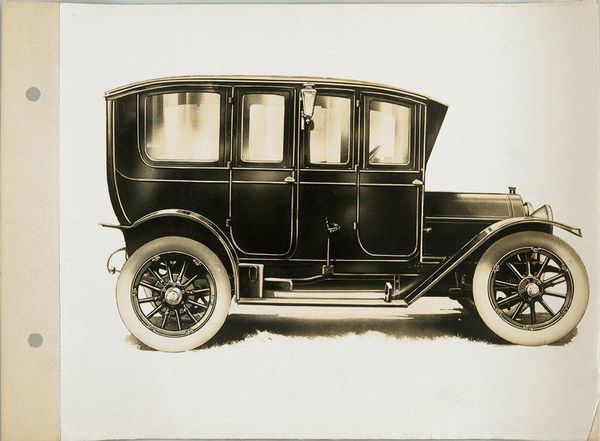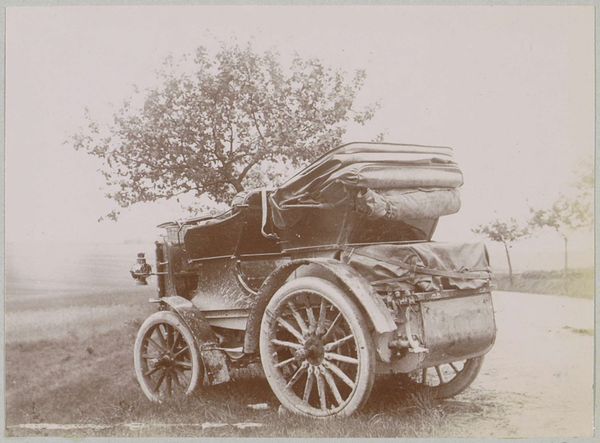
gelatin-silver-print, photography, gelatin-silver-print
#
gelatin-silver-print
#
pencil sketch
#
photography
#
geometric
#
gelatin-silver-print
#
realism
Dimensions: 7 7/16 x 9 7/16 in. (18.89 x 23.97 cm) (image)7 7/16 x 10 1/2 in. (18.89 x 26.67 cm) (mount)
Copyright: No Copyright - United States
Editor: We're looking at an untitled photograph from around 1911, a gelatin silver print by Spooner & Wells. It features a car. The whole composition feels quite formal and staged, almost like a product shot. What do you see when you look at this piece? Curator: Immediately, I'm drawn to the geometry. The strict horizontal and vertical lines juxtaposed against the curves of the wheels create a visually compelling tension. The photograph employs a restricted tonal range, contributing to a sense of stillness and manufactured elegance. Notice the high contrast; it seems deliberate. Editor: Yes, it’s incredibly precise. Is there a particular reason you focus on the geometry first? Curator: The formal elements dictate the visual experience. In examining structure and composition, we can decode the essence of the photograph itself. Observe how the placement of the vehicle guides the viewer's eye. What feelings arise? Editor: I feel as though this photograph focuses less on motion and speed, but more on the structure. Is the "realism" implied by the photographic medium in contrast to this inherent sense of stillness? Curator: That’s a great point! The photograph documents reality but aesthetic choices about the composition and tone manipulate it to offer specific view, indeed highlighting industrial prowess or modernity, rather than motion. Do you consider that shift a key factor in how you perceive this piece? Editor: Definitely. The photo made me see this early automobile in a new way. Thanks! Curator: I agree. Reflecting on the lines, shadows, and structure reveals the photograph's own internal mechanics.
Comments
No comments
Be the first to comment and join the conversation on the ultimate creative platform.

